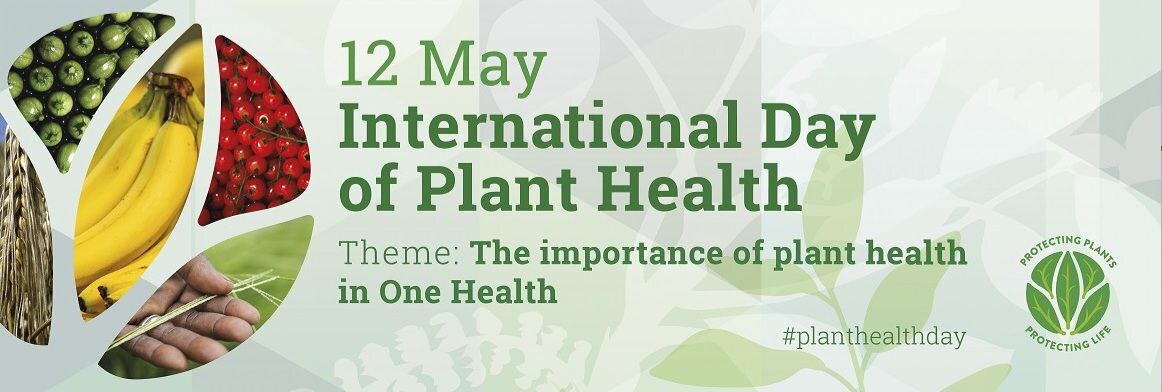Protect plants, protect lives

TEHRAN – Plants are life, the primary producers of biomass providing animals and humankind with food, medicine, and an enjoyable landscape; when we protect plants, we protect lives.
Humans depend on them for 80 percent of the food they consume and 98 percent of the oxygen they breathe. Protecting plant health can help end hunger, reduce poverty, protect biodiversity and the environment, and boost economic development.
Plant health is the foundation of food security and is interconnected with human, animal, and environmental health. Healthy plants provide nutrient-rich diets for humans and animals and help promote a balanced ecosystem.
Despite the fact that plants are important for the survival of humans and animals, they have been neglected in recent decades, and many of them are on the verge of extinction.
Humans lose as much as 40 percent of crops to pests, setting back global efforts to ensure food security, harming precious biodiversity, and impacting economies and livelihoods.
Pest-infected plants can trigger a cascade of negative effects on food supplies and induce outbreaks of zoonotic diseases transmitted through harmful pathogens. Pesticides play a role in pest management, but their overuse and poor management cause biodiversity loss, environmental pollution, ecosystem dysfunction, food safety concerns, and pesticide resistance.
The United Nations designated May 12 the International Day of Plant Health (IDPH) to raise global awareness on how protecting plant health. This year, the IDPH calls on everyone to take action to keep plants, animals, humans, and the environment healthy.
Plants are not just a backdrop to human and animal life – they are central to the health of our entire planet. In the One Health approach, which emphasizes the interconnectedness of people, animals, plants, and ecosystems, plant health is a vital but often under-recognized pillar.
Plants support livelihoods, boost economies, and global trade. Investing in plant health strengthens rural economies and helps build resilience to economic shocks.
They also contribute to climate change mitigation. Plants, especially forests, grasslands, and peatlands, act as carbon sinks. Forests absorb approximately 2.6 billion tonnes of carbon dioxide annually, helping to fight climate change and improve air quality. Maintaining plant health is critical to mitigating and adapting to climate threats.
Plants help ensure clean water. Over 80 percent of wastewater is discharged untreated into the environment. Healthy vegetation acts as a natural filter, improving water quality, reducing contamination, and the risk of waterborne diseases.
Plants regulate Earth’s critical environmental systems by stabilizing soils, filtering air and water, regulating the water cycle, and supporting biodiversity. They prevent soil erosion, protect beneficial insects like bees and microbes, and help reduce chemical use. Loss of biodiversity diminishes ecosystem resilience, making both the environment and human communities more vulnerable to climate extremes, pests, and disease outbreaks.
The diversity of plants in Iran is unique in West Asia to the extent that the country ranks second following Turkey. In addition to native plants, there are also some other species in the country known as endemic species, which are much more limited than native species. Out of 8,000 native species, some 1,800 are endemic. These species are found only in a certain geographical area.
The plant species identified in the country equals 80 percent of the plant species of the European continent in terms of their diversity and number.
Indiscriminate harvesting of plant species and climate change, particularly drought, have led to the destruction of many of them.
Plants, depending on their species, genetic and physiological structure, and the type of geographical region, show different resilience to drought.
Among the effects of drought on plants, the reduction of plants’ resistance to environmental stresses such as pests, high temperatures, and biological competitors can be named.
While certain species can tolerate extreme climatic and drought conditions or fluctuations, rare endemic species (native or species that are specific to a geographical area) are more sensitive and vulnerable. The loss of these plants is one of the biggest damages caused by drought.
Several measures can be taken to mitigate the impacts of climate change, particularly drought, on the destruction of plants, such as managing the exploitation of natural resources and preventing the destruction of ecosystems, to prevent severe conditions and lessen pressures on plants.
In addition, it is essential for all countries to reduce greenhouse gases by making comprehensive, decisive, and coordinated decisions.
Raising public awareness to protect nature is also a very important step that helps governments to preserve nature.
